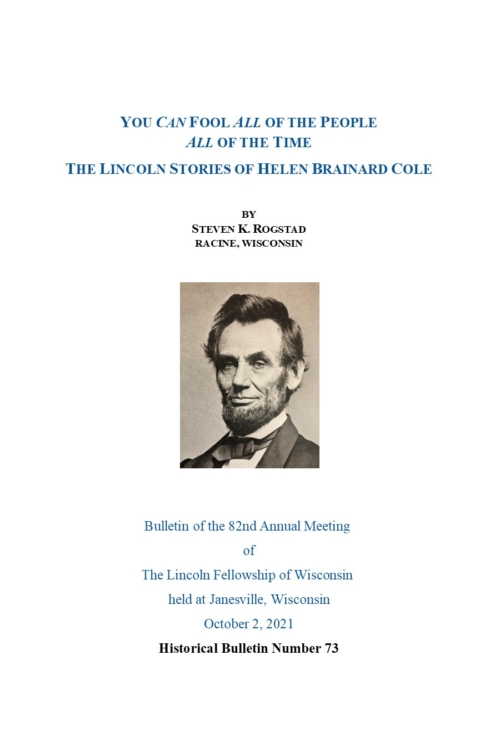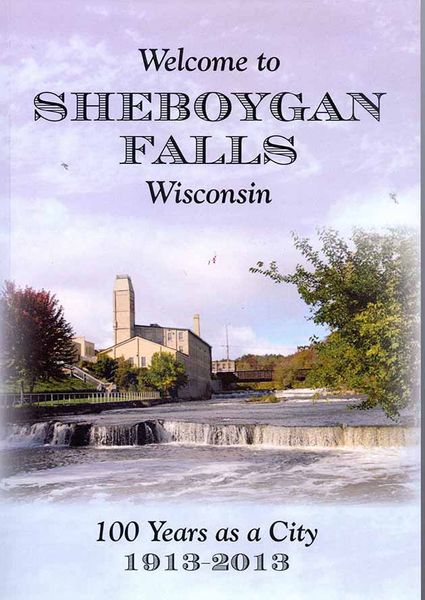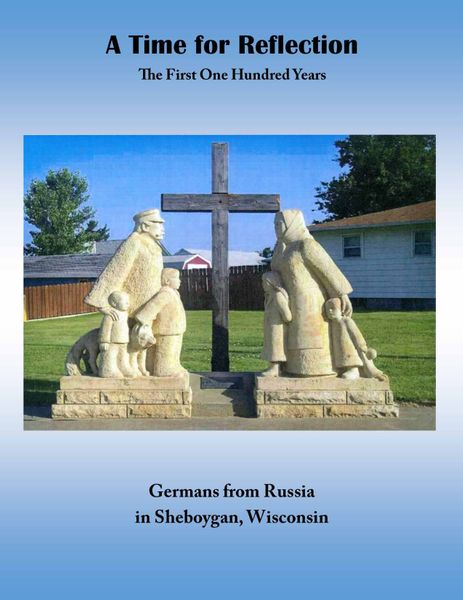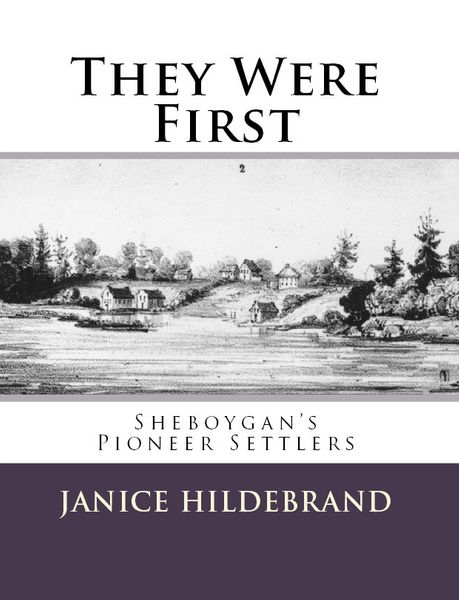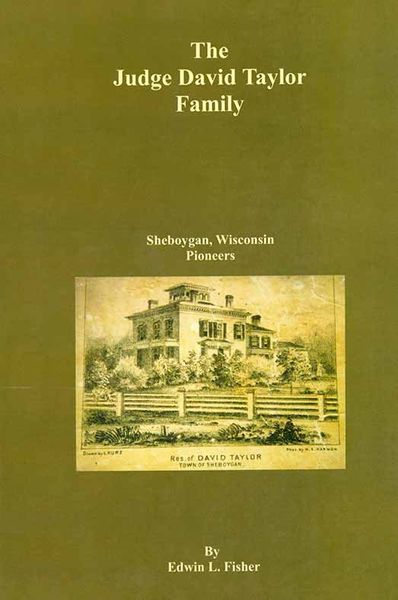-
Sale!Wisconsin's 37, The Lives of Those Missing in Action in the Vietnam War. By Erin Miller with John B. Sharpless Foreword by Major General John D. "Don" Logeman (Ret.) The signing of the Paris Peace Accords in 1973 signified the end of the Vietnam War. American personnel returned home and the 591 Americans held captive in North Vietnam were released. Still, 2,646 individuals did not come home. Thirty-seven of those missing in action were from Wisconsin. Using the recollections of the soldiers' families, friends and fellow servicemen, the author tells the story of each man's life.
-
Sale!This is a reprint and update of the 1976 book done for the Bicentennial. This book was done in conjunction with the 100th anniversary of Falls becoming a city. Trace the evolution of the business district and learn about the wide variety of civic groups which once kept citizens busy. See how the fire department has grown and take a peek at the folks who settled Falls
-
Sale!By Floyd Odekirk and Adrian Falchion Waiting on DEROS: A Soldier’s Story could not have been accomplished without the efforts of a Veteran, a writer and the spirit of every soldier walking within the pages of this book. Floyd Odekirk pursued the emotional task of bringing back the images of his tour in Vietnam (1968-69) so that the writer, Adrian Falchion, could paint in all its vibrant and dark colors the truths of war. Following the completion of 19 stories, Floyd Odekirk offered the light to his Veteran Brothers Michael Bennett, David Higgins, Craig Johnson, Dale Moravec, Donald Burch, Patrick Callahan, Joseph DeAugustine, Robert Moneypenny, Daniel Michael Pruitt and Thomas Vojvodich who each shared a story for the sake of honoring other soldiers.
-
Sale!By Elmer Koppelmann The citizens of Sheboygan County have always gone above and beyond the call of duty in times of military need; the Second World War was no different. Some 3000 young men and women served during World War II on all fronts and in all capacities from this county alone. Recorded here, after eighteen months of searches and interviews, are vignettes of 234 soldiers- one young woman and 233 young men from the Sheboygan County area who lost their lives. Four others- Joseph J. Archbold, Elmer C. Prahl, Roland Thompson, and Douglas Thornberg are noted as making the ultimate sacrifice, but regrettably, no information was found other than their names.
-
By Henry Dykstra This wonderful volume includes recollections of the author's childhood in Wood County, Wisconsin during the 1920s and 1930s. While the title sounds like a very long number from an old crank-style telephone, it actually refers to the two parents and ten children in the author's family. Henry Dykstra moved to Sheboygan County in 1941, and farmed there for over fifty years.
-
Sale!By Richard A. Stoelb This is the story of the men of Company F, 127th Infantry, 32nd Division, Wisconsin National Guard who left Sheboygan, Wisconsin for Federal Service on October 15, 1940. They would fight in the Battle for Buna on the island of New Guinea against the Japanese in World War II. Richard’s father, Roland Stoelb, was one of those soldiers who fought in the jungles of the Pacific to stop the Japanese during World War II. Roland along with dozens of boys from Sheboygan spent their Time in Hell, many of them making the ultimate sacrifice. Richard’s story personalizes the fight in the Pacific and honors the boys from Sheboygan.
-
A Time for Reflection 1892-1992 This booklet was prepared for a centennial celebration of the arrival of the first Volga Germans in Sheboygan, Wisconsin. That small group of seven, unsure of their destination or what they would do when they arrived, was followed by many other relatives and friends. Today, thousands of people who live in Sheboygan - or who lived there at one time - are descendants of German Russian immigrants. “A Time for Reflection” is our anniversary theme, for now is an appropriate time to reflect on our ancestors’ lives and to count the many blessings we have received as a result of their courage and sacrifice. With a new government in power, many Russian people of German descent will be searching for relatives and acquaintances in the West. Many Americans, too, want to be reunited with lost kin. We want to be ready to help each other. The history, chronology, and maps in this booklet represent only a small part of our unique heritage. Here is a brief look at the Volga Deitsch, how they got to Russia and why they came to America, and then to Sheboygan. It is a tale of more than 200 years of travel, hardship and joy endured by our ancestors. Older generations might recall the good times as well as the not-so-good when they read about old customs and practices. Younger people may learn a history they did not know existed. This 2016 update adds extra photos and more history.
-
By Janice Hildebrand This book is a tribute to the City of Sheboygan in its sesquicentennial year 2003. The area that is now the city was settled years before 1853, but the city was not chartered until then. This book documents 45 men and women who were important in Sheboygan's early years. Each bio contains one or more photos. 2016 reprint.
-
Since 1953, August brings Bratwurst Day, a celebration of sausage and of our collective German heritage. The brat is a social food in Wisconsin where Germans first introduced it to the New World. We have brat fries on weekends like folks have BBQs in the south and Chicago has its deep dish pizza. It is part of a deep food tradition. Few things identify one’s German heritage more than making sausage. Sausage was a means of survival for our German ancestors during the winter months, as well as a way to use precious meat scraps and pay homage to their porcine good luck charm. This book documents the long and varied history of some of Sheboygan's nearly forty meat markets and sausage producers. We’ll revisit sausage-making in the county and remember the heyday of 1950s Bratwurst Days.
-
Sale!By Edwin L. Fisher Because of the prominence and close connection by virtue of the Sheboygan County Historical Society occupation of his 1852 mansion, it was thought more should be known about Judge David Taylor and his family. As a Wisconsin State Supreme Court Justice, he was one of the most important early settlers in Sheboygan, Wisconsin. As research proceeded so much interesting family-related information became available that the story expanded.

